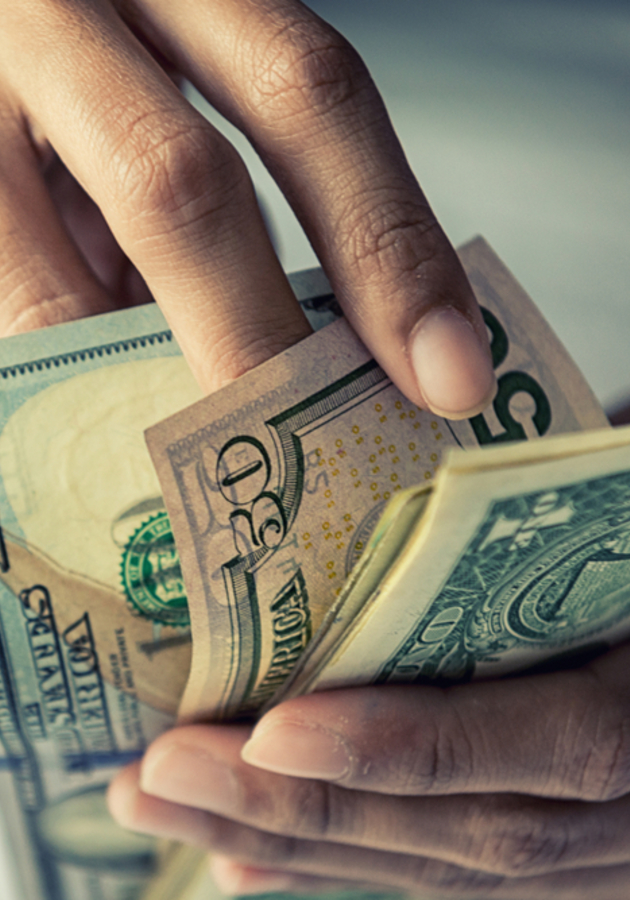When he started writing ‘’The Art of the Start 2.0,’’ Guy Kawasaki’s original intent was to merely update the book of the same title, published in 2004. However, as his writing progressed, Kawasaki kept adding, altering, and deleting content. So, instead of becoming a revision of the first one, this book became more like its sequel written with the same intention - to make entrepreneurship easier for those who want to bring new products to the market - whether they are in garages, dorms, or established companies. Not only that, this guide can also be helpful for social entrepreneurs in nonprofits and everyone who needs help in changing the world. So, get ready to hear valuable lessons from the man who started three companies, invested in ten, and advised organizations as large as Google.
Successful entrepreneurs begin by asking questions
Many people imagine that grandiose ambitions stand behind successful companies. Kawasaki claims this is a myth - great entrepreneurs don’t start with megalomaniacal goals, but rather by asking these simple questions:
- Therefore, what? Let’s say you spot or predict a trend. The next thing you should do is wonder about its consequences. For instance, if owning a smartphone with a camera and internet access is a trend, the answer to the ‘’therefore, what?’’ question would be, ‘’We should create an app that lets people upload their photos and rate and comment on the photos of others.’’
- Isn’t this interesting? Do you know how McDonald’s started? An appliance salesman, named Ray Kroc, was curious about the small restaurant that ordered eight mixers. When he visited it, he was impressed by its success and pitched the idea to Dick and Mac McDonald. So, whenever you are curious about something, act on that curiosity since it can be the beginning of a great new venture.
- Is there a better way? Asking this question can be a starting point for developing a cutting-edge product. It was for Steve Wozniak, for instance, because he believed there was a better way to access computers than having to work for governments, universities, or large companies.
- Why doesn’t our company do this? According to Kawasaki, the catalyzing force, in this case, is frustration with your current employer or management that doesn’t want to listen to your suggestion about creating a new product according to customers’ needs. Then you give up listening to them and decide to build it yourself.
- It’s possible, so why don’t we make it? When you have an idea for a product, you should not be guided by markets for big innovations as they are rarely proven in advance, but by the ‘’what-the-hell’’ attitude. Take Motorola as an example. Martin Cooper and the engineers decided to build a portable phone even though it was incomprehensible to most people in the 1970s.
- Where is the market leader weak? Kawasaki says three conditions make a market leader vulnerable - its commitment to a way of doing things, dissatisfied customers, and the lack of innovation. The second condition, for instance, was one of the reasons Netflix emerged - customers were frustrated with having to drive to Blockbuster stores to pick up and return videos.
It takes a team to make a new venture work
Just as people love to think that high ambitions precede the genesis of great companies, they also tend to believe that only one person is responsible for its success. Although a company's founder can also be the innovator, it always takes a team to make a new venture work.
When it comes to people you consider founding your company with, Kawasaki says you will be a good match, ‘’co-founding soul mates’’ in his words, if you ‘’share a similar intuition for how the startup and market will evolve.’’ For instance, you should not found a company with a person who believes that computers will remain a business tool for large organizations if you believe the future is small, cheap, and easy-to-use personal computers for everyone. Second, you should be on the same page with other founders when it comes to the size of the company you want to create. Perhaps they want to build an empire, while you want to operate small. Furthermore, founders should also share priorities. It is problematic if, for example, one founder wants to sell a startup after two years and the other aims to create a company that will endure for decades.
So, be cautious about the goals you and the co-founders share. However, you should also know that some differences between you are desirable. As Kawasaki notes, ‘’Founders need to complement each other to build a great organization.’’ For instance, a startup should at least have one person to make the product and one to sell it. Steve Wozniak was a person of the first kind, while Steve Jobs was of the second. Of course, different orientations and perspectives are also welcome. So, don’t worry if you are the person who sweats over details, while the other worries about big issues, or if your team is made of people of diverse ages, genders or social and religious backgrounds.
Keep in mind that founders may have to work together for a long time - therefore, choose them like you would a spouse. Furthermore, avoid adding founders only to enhance fundability. And, finally, to prevent people who leave in less than four years from owning large amounts of equity, make everyone (including yourself) vest his stock over time.
Things to have in mind before launching
Do you know that before inventing refrigerators, people cooled their food and drinks with ice harvested on frozen lakes? The next stage included freezing water in ice factories and delivering ice to customers. And, thirty years later, refrigerators were invented, enabling people to have their own ice factory at home. If you think that ice harvesters were those that started ice factories and later refrigerator companies, you are wrong. They only defined their business in terms of what they were doing, instead of thinking how they could alter the future. ‘’Had they taken this perspective,’’ Kawasaki writes, ‘’they might have jumped curves from harvesting to factory to refrigerator. The concept of jumping curves is an excellent model for entrepreneurs. Entrepreneurship is at its best when it alters the future, and it alters the future when it jumps curves.’’ So, before deciding to launch a product, remember the story about ice and refrigerators and ask yourself whether your product offers ‘’better sameness’’ or does it ‘’jump to the next curve.’’
Another thing you should ask yourself before launching a startup and a product is whether you picked a good name for them. An example of a good product and company name? According to Kawasaki, it is Google. First of all, it is because it has a ‘’verb potential.’’ In other words, it entered informal speech and became a verb - nowadays, people ‘’google’’ things instead of searching for them, right? Second, Google begins with a letter early in the alphabet, which makes it easier to find it on a list of products and companies that are alphabetically ordered. Finally, what you should also do when naming your startup is capitalize the first letter to make the name stand out in blocks of text and choose one-word names.
Apart from finding an idea for a product that jumps curves and picking a good name, another step in launching a company is building a prototype product and getting it to customers. You will know you are ready for this once your product is viable (able to get through the feedback loop and make money), valuable (it jumps curves, makes meaning, and changes the world), and validates your startup’s vision.
I pitch, therefore I am
In entrepreneurship, pitching is not only about raising money - it also leads to an agreement and, consequently, other outcomes such as sales, partnerships, and new hires. As Kawasaki writes, ‘’Forget ‘I think, therefore I am.’ For entrepreneurs, the operative phrase is ‘I pitch, therefore I am.”’
Mastering the art of pitching includes, first of all, preparing for the presentation in advance by bringing your projector, laptop, VGA adapters, copy of your presentation on a USB drive, and even printouts of your presentation to ensure that any unexpected events don’t interfere with its start. If they do, you will lose time and seem disorganized. And, no matter what you do after, you won’t be able to recover from a bad start - it will set the tone for whatever comes next.
When the meeting starts, you should set the stage for the rest of the pitch by showing your audience you value their time by asking ‘’How much of your time do I have?” Also, you want to ensure your pitch goes without interruption by asking them: “May I quickly go through my presentation and handle questions at the end?”
The most key rule you need to obey when presenting your company or product is the one Kawasaki calls: ‘’The 10/20/30 Rule.’’ According to it, you should use only ten slides in your presentation as your goal is not to cover every aspect of your startup but to stimulate enough interest to get you a second meeting. The number twenty stands for the duration of your pitch, while thirty refers to the thirty-point text. When it comes to text, you should also mind its font size so that it is visible even to older investors with deteriorated vision.
Now, a few words about the content of the presentation. Kawasaki says it should provide enough detail to make investors understand the scale of your business, examine the assumptions of your business model and determine the amount of capital you’ll require. Finally, make sure that you answer the ‘’So, what’’ question to every statement you make. For instance, if you say: ‘’We use digital signal processing in our hearing aids”, the answer to the so-what question is: “Our product increases the clarity of sounds.”
The art of enduring
What would, in your opinion, be the best metaphor for entrepreneurship - sprint, marathon or decathlon? Since it takes years to win in entrepreneurship, it cannot be compared with sprint. Marathon is not the right answer either, because it doesn’t include multiple events. Then, what is left is decathlon. Although it cannot completely be an adequate metaphor for entrepreneurship, as it is not a team sport, decathlon may mark an important aspect of entrepreneurship - endurance. As Kawasaki notes, both in decathlon and entrepreneurship ‘’the winner is the one who mastered the art of enduring.’’
If you want to succeed in making your startup endure, Kawasaki advises you to strive for internalization - that is, to get people to ‘’believe in your product and its way of doing things.’’ People who have internalized Macintosh, for instance, believe in a transparent, so called what-you-see is-what-you-get approach, and the efficacy of individuals.
Invoking social proof of your product is another powerful way to help you endure. Apple did this by making iPod with white earbuds. The thing is, as the earphones of most devices at the time were black, white color became a sign of recognition for the iPod. As Kawasaki notes, ‘’The presence of white earbuds served as social proof of iPod’s goodness and made people comfortable with buying an iPod. Then the more they bought iPods, the more they added to the proof of iPod’s acceptance. This encouraged even more people to buy iPods—a powerful upward spiral that should warm the heart of any entrepreneur.’’
If they are well supported, people will stick to products even when they aren’t the latest or the greatest. That is why quality customer support is the key to a company's endurance. Therefore, treat your customers the right way by doing what is right for them. You can do this by, for instance, supporting refunds and exchanges, sending out free samples, and accepting collect calls.
Final Notes
If we could use only one word to describe ‘’The Art of the Start 2.0,’’ it would be ‘’concise.’’ Therefore, we will finish this microbook in the same manner - concisely - by saying that this book is an inevitable read for every entrepreneur.
12min Tip
‘’Remember,’’ Kawasaki writes, ‘’few things are right or wrong in entrepreneurship—there’s only what works and what doesn’t work.’’





























